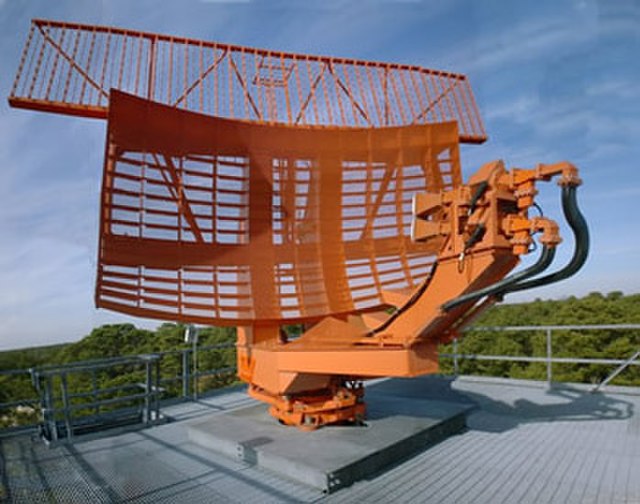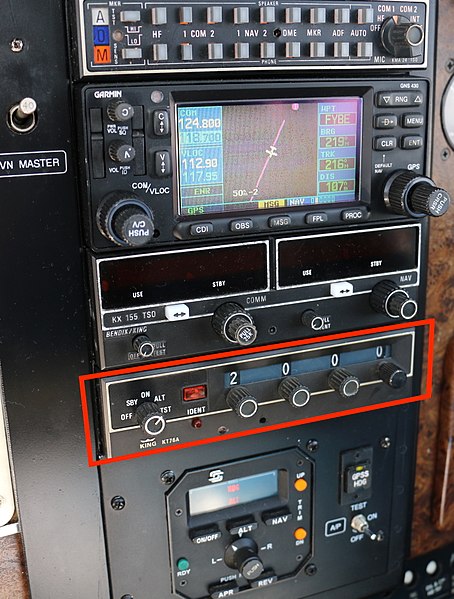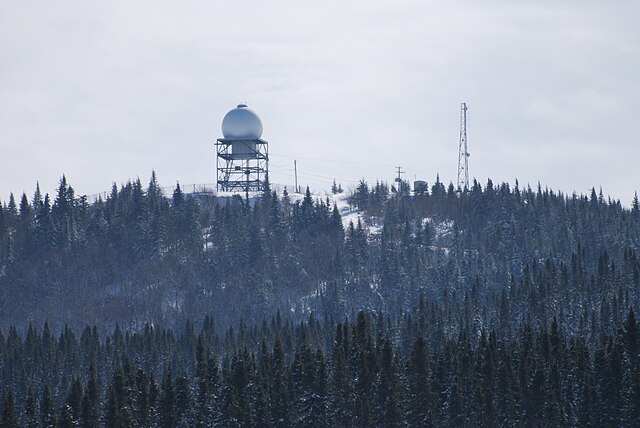Air traffic control radar beacon system
The air traffic control radar beacon system (ATCRBS) is a system used in air traffic control (ATC) to enhance surveillance radar monitoring and separation of air traffic. It consists of a rotating ground antenna and transponders in aircraft. The ground antenna sweeps a narrow vertical beam of microwaves around the airspace. When the beam strikes an aircraft, the transponder transmits a return signal back giving information such as altitude and the Squawk Code, a four digit code assigned to each aircraft that enters a region. Information about this aircraft is then entered into the system and subsequently added to the controller's screen to display this information when queried. This information can include flight number designation and altitude of the aircraft. ATCRBS assists air traffic control (ATC) surveillance radars by acquiring information about the aircraft being monitored, and providing this information to the radar controllers. The controllers can use the information to identify radar returns from aircraft and to distinguish those returns from ground clutter.

The antenna system of a typical air traffic control radar, the ASR-9. The curved reflector antenna on the bottom is the primary surveillance radar (PSR), and the flat antenna on top of it is the secondary surveillance radar (SSR). In operation the antenna rotates about a vertical axis, sweeping a vertical fan-shaped beam of microwaves around the local airspace to locate and track aircraft.
A light aircraft transponder
Detail of a radarscreen: a target in skin paint mode (amber) and as synthetic video (white)
Secondary surveillance radar
Secondary surveillance radar (SSR) is a radar system used in air traffic control (ATC), that unlike primary radar systems that measure the bearing and distance of targets using the detected reflections of radio signals, relies on targets equipped with a radar transponder, that reply to each interrogation signal by transmitting encoded data such as an identity code, the aircraft's altitude and further information depending on its chosen mode. SSR is based on the military identification friend or foe (IFF) technology originally developed during World War II; therefore, the two systems are still compatible. Monopulse secondary surveillance radar (MSSR), Mode S, TCAS and ADS-B are similar modern methods of secondary surveillance.
SSR antenna of Deutsche Flugsicherung at Neubrandenburg, in Mecklenburg/Western Pomerania
Transponder in a private aircraft squawking 2000
Secondary surveillance radar antenna (flat rectangle, top) mounted on an ASR-9 primary airport surveillance radar antenna (curved rectangle, bottom).
Independent secondary surveillance radar (ISSR), designation YMT, north of Chibougamau, Quebec, Canada






